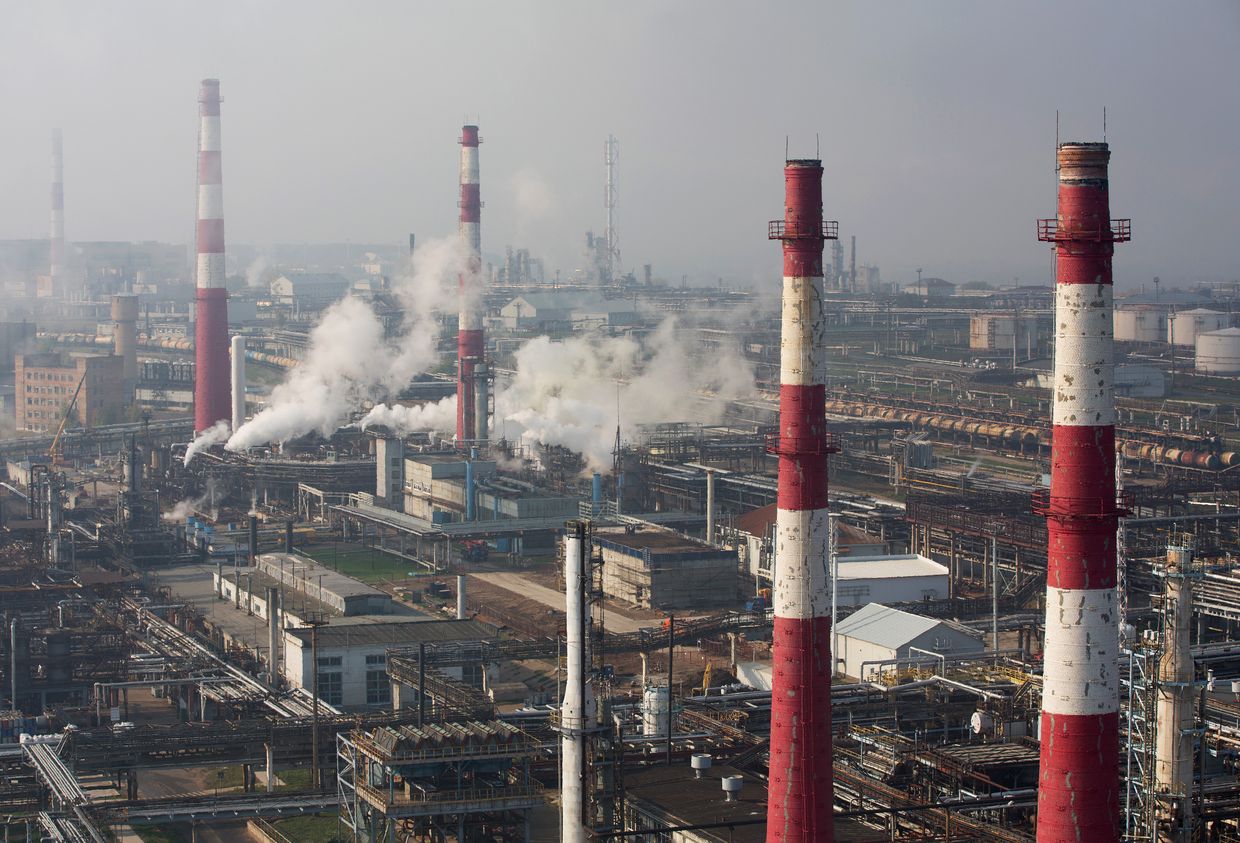Ukraine war latest: Biden signs $61 billion aid bill for Ukraine; US began secretly providing ATACMS in March

Key developments on April 24:
- Biden signs $61 billion aid bill for Ukraine
- Pentagon ready to send $1 billion in weapons to Kyiv
- State Department confirms US began secretly providing Ukraine long-range ATACMS in March
- Sources: SBU drone attack destroys 26,000 cubic meters of Russian fuel in Smolensk Oblast
- Ombudsman: Children in occupied Ukraine 'forced to make trench candles.'
U.S. President Joe Biden announced during a briefing on April 24 he had signed the foreign aid bill containing close to $61 billion for Ukraine into law, marking the final step of the legislative process.
"It gives vital support to America's partners so they can defend themselves from threats to their sovereignty," Biden said, adding he would order to send weapons to Kyiv in the next few hours.
After months of political infighting and a deteriorating situation on the battlefield in Ukraine, the U.S. House of Representatives finally passed the crucial foreign aid package on April 20, which includes $60.84 billion for Ukraine.
The House voted on three separate bills on April 20 granting aid to Ukraine, Israel, and the Indo-Pacific region, which is intended to address Chinese aggression in the region. In addition to aiding Ukraine, the bills include $26.4 billion to aid Israel and $8.1 billion to be spent on Indo-Pacific security.
A fourth bill on national security priorities catered to Republican goals, including sanctions on Iran, the potential transfer of seized Russian assets to Ukraine, and a measure that could lead to a ban on TikTok.
The Senate then overwhelmingly approved the bill on April 23, with 79 votes in favor and 18 against.
Pentagon spokesperson General Pat Ryder said that the flow of U.S. military assistance could resume within days following Biden's signature.
"Thanks to organizations like the Security Assistance Group-Ukraine and plus our efforts with international allies and partners, we have created a very robust logistics network to enable the delivery of aid into Ukraine," Ryder said.
The new tranche of aid will stem from Biden's presidential drawdown authority (PDA), which takes military equipment from existing stockpiles, meaning that potential procurement-related delays will be limited.
Some of the U.S. military aid for Kyiv is already reportedly in Germany and Poland, cutting down the time needed for the weapons and equipment to reach the front line.
Other pieces derived from the $61 billion package may take more time, as they may need to be sent from the U.S. or other locations. Some potential items of military aid will also need to be purchased or even manufactured, which will take even longer.

Pentagon ready to send $1 billion in weapons to Kyiv
The Pentagon announced on April 24 that it is ready to move forward with sending $1 billion of weapons from U.S. stockpiles to Kyiv now that President Joe Biden has signed a $95 billion aid package that includes more aid for Ukraine.
Biden signed the foreign aid bill into law on April 24, which contains close to $61 billion for Ukraine, following months of delays and political infighting in Congress.
This is the first defense package Ukraine will receive under the signed aid bill. A previous one worth $300 million was announced by Washington on March 12.
The new package will include RIM-7 and AIM-9M missiles for air defense, Stinger anti-aircraft missiles, TOW missiles, Javelin and AT-4 anti-armor systems, and Bradley infantry fighting vehicles.
It will also include additional ammunition for high-mobility artillery rocket systems (HIMARS), artillery shells, precision aerial munitions, including high explosive and dual-purpose improved conventional munitions rounds (DPICM), and various other support equipment.
"This package will surge munitions, weapons, and equipment forward to support Ukraine's ability to defend its front lines, protect its cities, and counter Russia's continued attacks," the Pentagon said in a statement.
State Department confirms US began secretly providing Ukraine long-range ATACMS missiles in March
The U.S. began this spring secretly providing Ukraine with long-range Army Tactical Missile Systems (ATACMS) at President Joe Biden's direction, U.S. State Department Spokesperson Vedant Patel confirmed at a press briefing on April 24.
The statement was in response to a journalist's question about a Reuters report on April 24 that Washington had covertly shipped Kyiv long-range ATACMS missiles in recent weeks.
"He (Biden) quietly directed his National Security team to send ATACMS to Ukraine for use inside Ukrainian sovereign territory in February. They started moving as part of the military aid package we announced on March 12," Patel said. Ukraine received missiles in April, according to Patel.
Washington announced an aid package worth $300 million to Kyiv on March 12 while Congress debated further aid to Ukraine.
Biden instructed his team to secretly include the long-range ATACMS in the package for security reasons and "to maintain the element of surprise for Ukraine," Reuters reported, citing an unnamed U.S. official.
The U.S. first delivered mid-range older models of ATACMS missiles to Ukraine last fall, following months of deliberation. The older models have a range of 165 kilometers. Newer models of ATACMS have a maximum range of around 300 kilometers and their delivery to Ukraine was previously unknown to the public.
Kyiv has continued to press its Western allies for longer-range weapons, including the newer ATACMS, but partners have hesitated about delivering arms that could potentially be used to strike within Russian territory.

The Pentagon also raised concerns that sending Ukraine the long-range missiles could damage the U.S.'s military readiness by depleting its own stockpiles, Reuters reported. The U.S. was able to address these concerns in January, leading to the ultimate decision to send them to Ukraine.
Russia's use of North Korean long-range ballistic missiles against Ukraine and attacks on Ukraine's critical infrastructure, influenced Washington's decision to send Kyiv long-range missiles after all, Reuters reported.
It is unknown how many ATACMS were delivered to Ukraine. Kyiv launched some of the recently received missiles on April 17 against a Russian airfield in Dzhankoi in occupied Crimea, located about 165 kilometers from the front line, the U.S. official told Reuters.
Four Russian S-400 launchers, three radar stations, a command post for air defense operations, and air space surveillance equipment Fundament-M were destroyed in the attack on Dzhankoi, according to Ukraine's military intelligence.

Sources: SBU drone attack destroys 26,000 cubic meters of Russian fuel in Smolensk Oblast
Drones of the Security Service of Ukraine (SBU) attacked two oil depots in Russia's Smolensk Oblast overnight, destroying 26,000 cubic meters of fuel, sources in law enforcement agencies told the Kyiv Independent on April 24.
Russian media and officials reported drone attacks in Smolensk Oblast, as well as in Lipetsk and Voronezh oblasts overnight, reportedly targeting energy and industrial facilities.
Footage of what was purported to be a burning oil terminal in Yartsevo, Smolensk Oblast, began circulating on social media.
The Kyiv Independent's sources said that Russia's state-controlled company Rosneft "lost two storage and pumping bases for fuel and lubricants in Yartsevo and Razdorovo in Smolensk Oblast."
According to the sources, the operation was carried out by SBU drones.
Some 26,000 cubic meters of Russian fuel were purportedly stored there. After the powerful explosions, a large-scale fire and personnel evacuation began at the facilities, the sources said.

"The SBU continues to effectively destroy the military infrastructure and logistics that provide fuel to the Russian army in Ukraine. These objects are and will remain our completely legitimate goals," the sources said.
Vasily Anokhin, the Smolensk Oblast governor, claimed there were no casualties as a result of the strike and that emergency services are working on the spot.
"As a result of the enemy attack on fuel and energy facilities, fires broke out in the Smolensk and Yartsevo districts," Anokhin wrote on his Telegram channel.
The Kyiv Independent could not independently verify the claims.
In recent weeks, Ukrainian forces have launched a series of drone strikes aimed at damaging Russia's oil industry. A large-scale attack against Russian energy infrastructure on April 20 reportedly started a fire at a fuel storage tank in Smolensk Oblast.
Strikes against Russian energy targets have prompted criticism from U.S. officials, who have made it clear that Washington does not support Ukraine's attacks on oil refineries, citing fears that they could threaten the global energy market.
In response, President Volodymyr Zelensky said that Kyiv has the right to use its own weapons with retaliatory strikes on Russian oil refineries.
Ombudsman: Children in occupied Ukraine 'forced to make trench candles'
Russian authorities in occupied Ukraine are forcing students to make trench candles as part of their curriculum, Ukraine's Ombudsman Dmytro Lubinets said on April 23.
In a post on Facebook, Lubinets said the manual labor was being presented as a "public initiative" but said it was just one of many measures used to prepare students for "war against their homeland."
Ukrainian children in occupied territories face efforts to suppress their identity in "re-education camps" and Russian foster families, as well as training in military camps, Ukrainian officials have previously reported.
A trench candle is a small heating and cooking device made from a food can, strips of cardboard, and paraffin wax.
Lubinets said Russian authorities in the occupied territories had told education leaders that all students be taught how to make them.
"All actions of the enemy are aimed at erasing the identity of Ukrainian children," the ombudsman said.
"And the world community must react to such actions of the Russian Federation."
In February, Ukraine's National Resistance Center reported that Russia is establishing military camps for Ukrainian teenagers in the Russian-occupied territories of Zaporizhzhia Oblast.
Teenagers will allegedly be taught firearms and engineering training. The center said this is "preparation for service in the Russian army."













